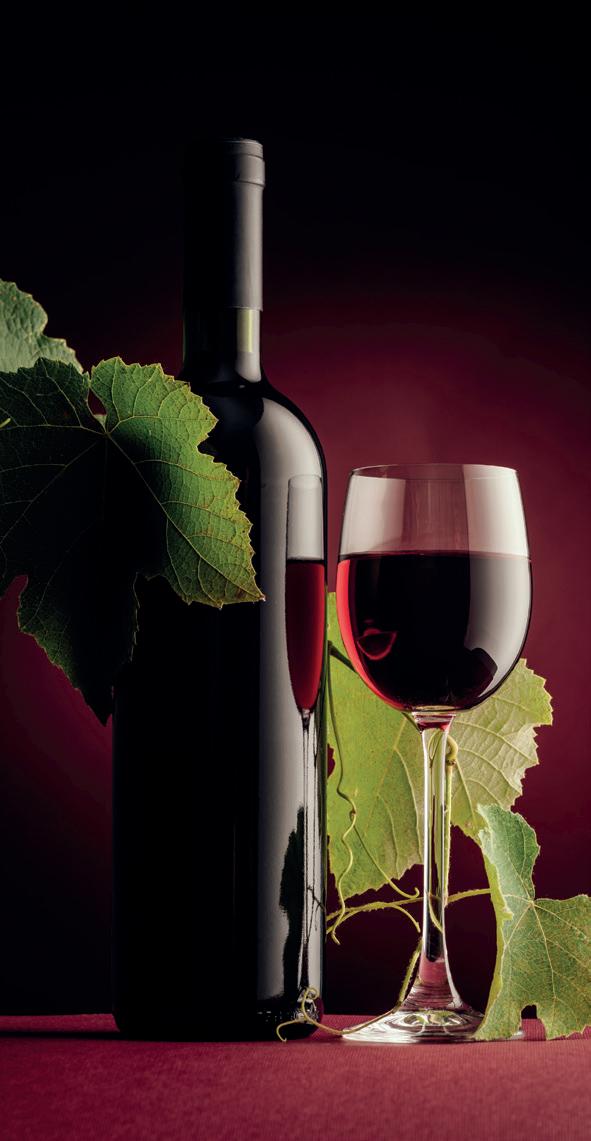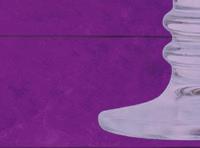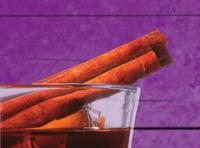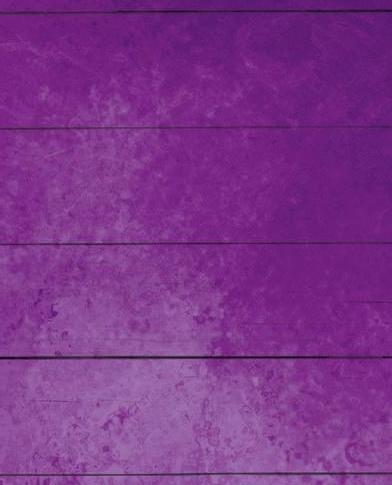
13 minute read
RED IS THE COLOUR OF LOVE
“SOMETIMES YOU WANT TO GO WHERE EVERYBODY KNOWS YOUR NAME – AND THEY’RE ALWAYS GLAD YOU CAME ...” WENT THE LYRICS OF THE HIT TELEVISION SERIES, CHEERS. WINE CAN BE A BIT LIKE THAT TOO, FIONA MCDONALD WRITES; SOMETIMES YOU WANT A WINE THAT COMFORTS YOU WITH ITS FAMILIARITY.
FAMILIARITY BREEDS CONTENT
Advertisement
There’s a lot to be said for a known quantity: a wine that is dependable and reliable – every single time. It’s going to be as familiar as a warm, enveloping hug from a friend, its taste will comfort you and bring the memories flooding back. Of good times with good mates.
All too often we lose sight of these old dependables when something new, funkier and flashier comes along. It’s only human to want the shiny new thing but we should not lose sight of some of our old treasures.
The architect of the theory of relativity Albert Einstein wrote that time is an illusion. When it comes to some of South Africa’s Golden Oldies, it’s so true. Wines such as Nederburg Baronne, Chateau Libertas, Alto Rouge and KWV Roodeberg might have been around for 60 or even 80 years but they are still going strong as individual brands.

www.topsatspar.co.za RIGHT: Some of South Africa’s greatest wine treasures are richly fruity, warm and velvety smooth red blends that have been around for decades. RIGHT: Wines such as Nederburg Baronne, Chateau Libertas, Alto Rouge and KWV Roodeberg might have been around for 60 or even 80 years.

Take Chateau Libertas for example. We think of it as a steak wine, something to have with mates around a braai fire with the rugby, football or cricket on the TV in the background. But this is a wine that debuted in 1932 and was served to the British Royal family at a state banquet during their 1947 visit! General Montgomery, famous for his military exploits at El Alamein in the North African desert in World War II, was served Chateau Lib in 1954 – while British Prime Minister Harold Macmillan also had the pleasure when in Cape Town for his famous “Winds of Change” speech at Parliament in 1960.
Its origins go further back – to a man called Dr William Charles (Bill) Winshaw who accompanied a consignment of mules and horses to South Africa during the Anglo-Boer War at the turn of the 20th century.
He stayed and ultimately founded Stellenbosch Farmers’ Winery – because he believed in wine being good for health. In an advert in The Wine Book of South Africa from 1936, Winshaw promoted the health benefits of Chateau Libertas since it was a wine “not to intoxicate but give just the right stimulation to the digestion”.
Chateau Libertas has always been Cabernet Sauvignon based but over the years the other blending components have varied – from Cinsaut for many decades, to Shiraz, Ruby Cabernet, Petit Verdot and Merlot more recently. In fact, older bottles of this wine are making an entirely new generation of winemakers sit up and take notice. Historic bottles, long forgotten in dusty cellars, are now actively sought out and tasted – because international wine writers and critics, having tasted bottles from the 40s, 50s and 60s have raved about them!
If imitation is the sincerest form of flattery, then Chateau Libertas should be immensely proud! As a

“Great wine requires a madman to grow the vine, a wise man to watch over it, a lucid poet to make it and a lover to drink it.” – Salvador Dali
brand it is 86 years old – still going strong and actually inspiring the new generation of winemakers to try and emulate it in the form of “new” Cabernet Sauvignon/ Cinsaut blends.
Not quite as old is KWV Roodeberg – but its longevity is linked primarily to its myth. Because of the co-operative system, Roodeberg was only commercially available abroad – although there was a thriving secondary market if you knew a wine farmer who had a KWV quota!
Roodeberg was developed by Dr Charles Niehaus with the first bottling in 1949. Initially he settled on two blends: Roodeberg No 1 and Roodeberg No 2. The first was Cabernet Sauvignon based and the latter is speculated to have been a blend of Cabernet Sauvignon and Shiraz – although the precise components have been lost in the mists of time.
Due to the marvels of modern technology – and the fact sheet replicated on Roodeberg’s web page, we now know that the 2014 Roodeberg is mainly Cabernet (43%) with Shiraz and Malbec (32% and 22% respectively) playing a supportive role while there’s a literal splash of 3% Cabernet Franc to add a spice of seasoning.
This iconic South African red was only made available locally in 2004, 10 years after the birth of democracy. Although the look has changed over the years, one thing has remained constant and that is the depiction of La Concorde, the head office of the KWV in Paarl, on the front label. (La Concorde was one of the original five farms granted to the Huguenots by Governor Simon van der Stel in 1688.)
The wine came before the headquarters building since La Concorde was only constructed in 1958, but it is still home to Roodeberg.
There’s a great quote on Alto’s website: “People talk about white wines for a couple of years but discuss red wines for decades to come.”
And with a wine brand that’s been around for 50 years – but is still only on its fourth winemaker, that’s quite a statement to make. The name alto refers to its location, high on the slopes of the Helderberg outside Stellenbosch. Those slopes are renowned for producing magical Cabernet Sauvignon which, like the other two wines, is the mainstay of the Alto Rouge blend that South Africans know and love. It’s one of those wines which is either a ladder or a doorway leading to new discoveries.
Winemaker Duncan Savage remembers being a commerce student and Alto Rouge being a quality step up from what he was used to in his early days of wine drinking. “I’d buy Alto Rouge knowing that it offered more complexity and interest – and it was an important part of my wine drinking journey.” It’s a journey that has seen him switch from commerce to winemaking and making an international name for himself at Cape Point Vineyards before breaking away to paddle his own canoe at Savage Wines.
Only four winemakers have ever held the reins at Alto. It started with Piet du Toit when he bought the farm in 1959 – and continued when he handed over to his son, Springbok rugby player Hempies du Toit in 1983. By the time he broke away in 2000 to farm on his own at Annandale, Alto was part of the Distell stable and Schalk van der Westhuizen was put in charge. Although a corporate winery, his son Bertho van der Westhuizen was appointed to succeed Schalk in 2015.
Having been around for 50 years Alto Rouge remains predominantly Cabernet Sauvignon and Cabernet Franc but Shiraz, Merlot and even a dab of Petit Verdot are now blended in.
The 2018 Platter Guide rates Nederburg Baronne a solid 3 Stars and states: “What’s not to like about this ever-reliable everyday glugger?” going on to specify that it is “mainly Cab and Shiraz”.
Back in 1995, the Nederburg Baronne was retailing for less than R10 a bottle, was also rated a solid 3 Stars by Platter and was described thus: “Dry red blend (Cabernet-Shiraz), usually lighter-bodied, less complexity than Paarl Cab and Edelrood, easier drinking. Fits no varietal pigeonhole but both 1990 with sweet-fruity attack on nose, and 1991 (3½ Stars) with strong sweet-berry flavours too are quite firm, serious wines. Between 30-35% Shiraz. Formerly – pre-1989 about 60% Cabernet, 25% Shiraz, 15% Merlot, typically showed almond-nutty notes. Half wine is big vat-aged about a year.” 50 000 cases.
That same 1995 Platter Guide made an interesting observation about Nederburg: “Because Nederburg is such a large and well-established label – a South African wine list without at least one of their brands is as rare as steak tartare – it’s sometime underrated. There could be an attitude problem; the old familiaritybreeds-contempt syndrome.” There’s a certain amount of truth in that statement and it applies to all four wines reviewed here. But do yourself a favour and revisit these old favourites. To my mind, there’s no contempt but rather appreciation and respect for the familiarity.
Golden oldies which breed contentment.
MAKE YOUR OWN GLÜHWEIN

For every 500ml of red wine, allow one large cup of water, sugar and spice to personal taste. So for a 750ml bottle of red wine, a cup-anda-half of water and sugar would be needed. Spices most commonly used include star anise, cinnamon quills, cloves and nutmeg along with strips of orange or lemon zest. Cardamom and ginger can also be used, depending on personal preference. The delightfully quaint Mrs Beeton’s Book of Household Management recommends boiling the spice in the water in order to infuse it with the spicy flavour before adding the sugar and wine. Bring the mixture to the boil and then turn off the heat. The glühwein should be served piping hot – but not boiling! Alternate suggestions are to use the already sweet fortified wine formerly known locally as Port – or even cider, the latter which works really well with the various spices harmonising well with the tangy apple flavour.
MULL IT OVER G L Ü H W E I N
HEATING AND SWEETENING WINE, ALONG WITH ADDING SPICES IS AN ANCIENT TRADITION, FIONA MCDONALD FINDS. AND THERE’S A REASON THAT IT’S POPULAR IN COLD COUNTRIES.

It was not Siberia, Svalbard in Norway or anywhere quite so exotic. Rather, it was an exposed plateau in the Karoo, an astronomical observatory perfect for looking at the stars. And it was cold: in a teeth-chattering, deathly bone-chilling way that makes you feel as if you’ll never be warm again.
That was until I wrapped my woollen mittened hands around a steaming spicy mug of glühwein. So much of what we love is linked to smell and memory. I happily inhaled aromas of warm cinnamon, star anise, cardamom and orange peel – all underpinned by a comfortingly familiar winey undertone. A cheery glow started from deep within ...
A few hundred millilitres of warm, spicy glühwein consumed with relish did what my multiple layers of clothes, mohair socks and insulated ski pants over thermal long johns could not: it warmed me – from the inside out!
That mid-winter visit to the observatory in Sutherland in the barren Karoo made me appreciate just why it features on all the weather reports: it truly IS the coldest place in the country! But it gave me a new appreciation for something I’d

always dismissed as a bit of fad or waste of red wine.
Glühwein or mulled wine has been around for centuries and is reliably thought to have had its origin in Roman times. With the Roman legions conquering Helvetia, Gaul and even the island the Anglo-Saxons called home, their practice of heating wine and adding spices became well established and adopted by many of the oppressed nations.
There is even a medieval recipe book dating back to 1390 which details the spices to be used for mulled wine: cinnamon, ginger, cloves, nutmeg, long pepper, marjoram, nutmeg, cardamom and galangal – along with sugar and red wine.
It’s a drink for cold weather and many is the tourist visiting Austria, Germany or Alsace in France in the run-up to Christmas who has returned home with one or two of the cheery mugs which glühwein is served in at the many festive markets. One of the best known is held annually in front of Vienna’s rathaus on the large cobbled square, dotted with market stalls selling a variety of seasonal fare.
But just take a moment to think of the spice trade which preceded the Romans and their rampage through Europe. Since antiquity, spices were used in the East – pepper, chillies, turmeric, ginger, cardamom and cinnamon. Through trade, the Middle East and India – notably Kerala – became hubs of the spice trade – as far back as 3000 BCE. The Greco-Roman empire then took these exotic flavourings into Europe and by the Middle Ages the Ottoman Turks and Venetian merchants traded profitably in them.
And don’t forget South Africa’s establishment and importance as an alternative route to the East for this lucrative bounty around the same time, ushering in Portuguese and Dutch trade influence.
GLÜHWEIN
In Scandinavian countries this warming red wine drink is known as glögi – and also starts off with water and spices being boiled and simmered briefly before it’s sieved and then mixed with blackcurrant juice, wine or clear distilled spirit. Sometimes even almonds or raisins are added.
Wikipedia reports that the Finnish word glögi comes from the Swedish word glögg, which in turn comes from the words glödgat vin or hot wine.
Europeans who emigrated to South America took the warmed wine tradition with them and in southern parts of Brazil, during the mid-winter festival of Festa Junina in June vinho quente – or warmed/ hot red wine with cloves and cinnamon sticks – is often served.
In Chile candola or vino navega’o is made from heated red wine, orange zest, cinnamon, cloves and sugar – and again served countrywide in mid-winter. France knows it as vin chaud (hot wine) and it’s often mixed with honey, cinnamon and orange but the French prefer that it not be too sweet.
The Douro region of Portugal is the home of Port, the fiery fortified and often sweet wine. They too call it vinho quente.
In Turkey it is Sıcak Şarap (hot wine) while in Quebec, Canada, red wine is mixed with maple syrup, spirit and then heated. It’s known as Caribou and Wikipedia notes that it’s popular during the Quebec winter carnival.


























